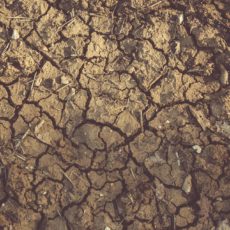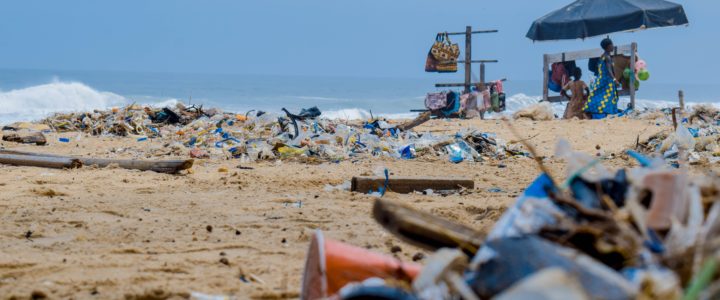
In the Northern Hemisphere, the weather is finally warming up. Maybe it’s soon time to hit the beach! The beauty of the horizon, the foamy waves crashing into the shore, the sand smooshing softly under your feet, and the tiny pieces of plastic scratching between your toes…..wait, what?? Yes, with every visit to coastlines right around the world you’ll be struck by the presence of plastic. Perhaps it’s big items, like single use water or soda bottles which get left behind, or maybe it’s a small piece of a toothbrush, that’s traveled with the current over 5,000 miles during the last 5 years, from when it fell off the trash barge it was on. Either way, it tells us that our oceans are in trouble. We need to act now to ensure plastic in the ocean isn’t humankind’s legacy!
Before we dive into that, let’s look at a little bit of history. The guy who invented synthetic polymer, John Hyatt, way back in 1869, was hailed a hero – he had produced celluloid, a material which would save the animals! Yes, I know that sounds odd, but bear with me! Ivory and tortoiseshell were being used to make hair combs and billiard balls, among many other everyday items at the time. If celluloid was used instead, elephants and tortoises had a few less reasons to be hunted and killed – obviously a great thing! Then in 1907, completely synthetic plastic was invented by a guy called Leo Baekeland. This product, called Bakelite, would allow us to ‘beat’ Mother Nature. It was totally conformable so we could shape it into anything we wanted, it was waterproof, resistant to degradation, had a high strength to weight ratio and it was cheap. It would protect us, our food and our belongings from the elements, and it would last forever.
It took a little while, but about 40 years later, our obsession with all things plastic began, and commercial production of plastic exploded. Just 10 years later, we got the first report of plastic waste being noticed in our oceans. Suddenly, some people had the realization that the whole ‘lasting forever’ thing might not have been such a great idea.
Now let’s take a short lesson in geography. There are 11 places on the planet where the ocean’s currents create a spiraling effect, or vortex. There are stable high pressure systems in these locations, which means there’s very little wind and slower moving waves. These areas are called Gyres.
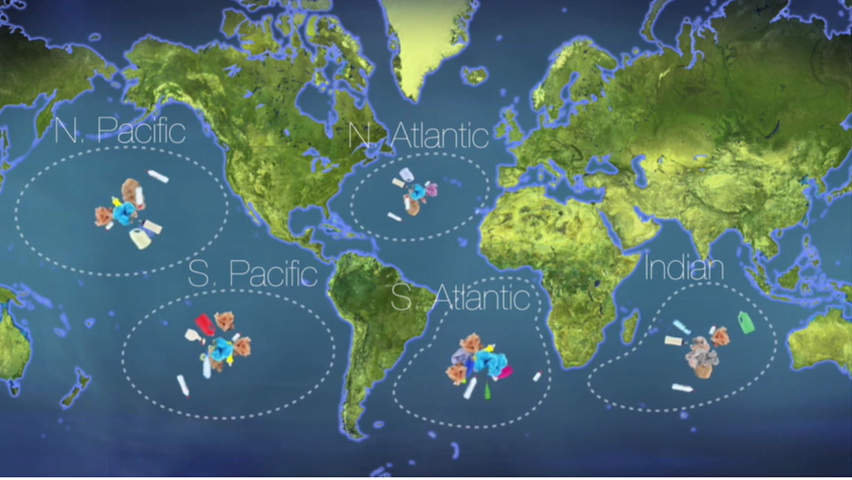
Whether you knew it was a gyre or not, you’ve heard of one of these places: The Great Pacific Garbage Patch. But in fact, 5 of these gyres are areas where plastic waste becomes trapped in a pool of mess. Trash is carried there on the ocean’s currents, and then it’s difficult, but not impossible, for it to leave. Most of the plastic that ends up in the open ocean, millions of metric tons of the stuff, is small. That’s because about 50% of plastic which lands in the ocean sinks, like a PET water bottle as it fills up with water. And most of that which floats actually gets beached pretty quickly – recent research found it happens usually within a month of being ‘leaked’ into the ocean. Obviously this is awful – it can ruin an area’s necessary tourism dollar and be destructive for wildlife.
But we’re focusing on that which goes far into the ocean today. So once the movement of water removes that bottle cap, which was barely on, and the bottle sinks, the cap is free to start its journey to a gyre. It might take years. And with month after month of the sun beaming down on it, and the waves beating away at it, it’s brittle, so it starts to fragment and become smaller. We therefore don’t see ‘islands’ of trash in the gyres, we see vast areas of soupy, murky ocean, with millions of small pieces of plastic floating at varying depths from the very top, to a few feet under.
So there are 2 major issues:
1. the tiny size of the plastic pieces means that ocean creatures and marine birds can easily ingest them. So microplastic goes all the way up the food chain, including into humans; and
2. there’s no simple collection method: we can’t simply strain the water or scoop the plastic up. There have been billions of dollars invested in an array of tech to try to do just that, but it’s only minimally successful. One of these such organizations is called The Ocean Cleanup. Although we see immense amounts of trash having been collected – and are supremely grateful that it’s being done! – it’s a tiny percentage of the total amount of trash there.
This last collection by this team, the most financially backed innovation in this space, takes the amount of trash that they’ve removed from our oceans to 206,000 kg!! That’s a big number in anyone’s book! But….that’s 216 metric tons. Although it’s clearly difficult to count and there’s no absolutely definitely correct amount, the OECD (Organization for Economic Co-operation and Development) most recently estimated that the ocean has about 30 million tons of plastic. So we wholeheartedly applaud what Ocean Cleanup is doing…but sadly they’ve removed less than 0.001% of plastic in our oceans, and 0.2% of plastic in the Great Pacific Garbage Patch. Such is the enormous scale of the problem.
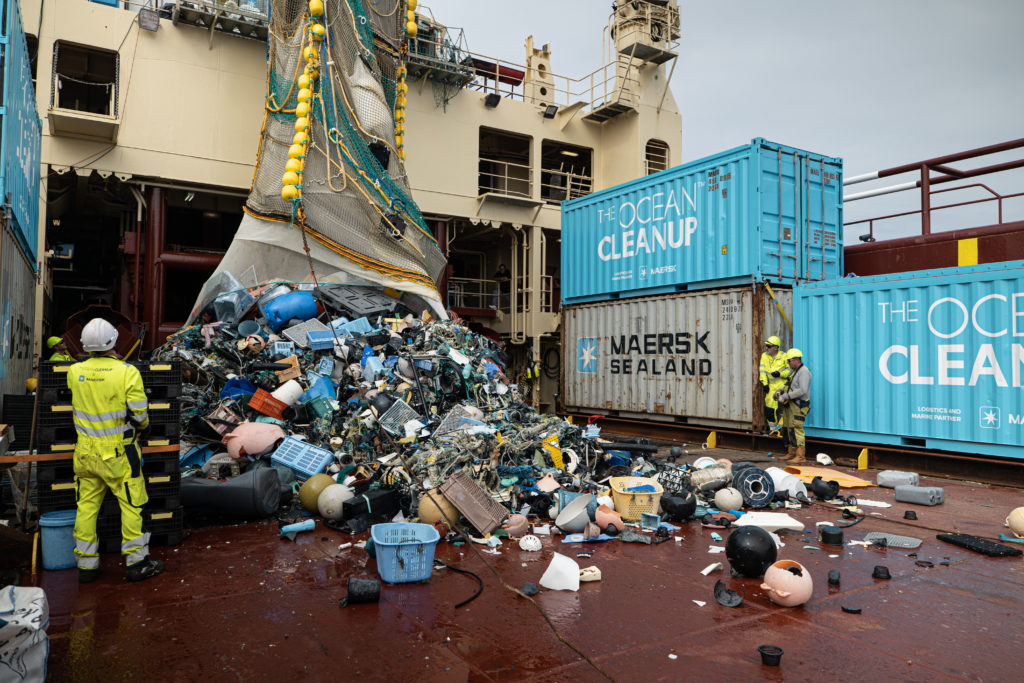
How is it even possible that there’s so much plastic trash in our beautiful environment? Well, we produce about 460 MILLION tons of plastic – every. single. year. Nearly three quarters of that is immediately waste: single use plastics like water bottles, food packaging like yoghurt pots, plastic coffee stirrers, toothbrush packaging, cigarette butts, plastic grocery bags and so on.
In 2019 alone, 22 million tons of plastic waste found its way into the environment. And of that, 6.1 million tons got into rivers, lakes and the ocean. More recent research suggests that each year, somewhere between 9 and 14 million tons of plastic ends up in our oceans.
So while the tap of plastic production is still on full blast, all the cleaning up we can do will never be enough. Think of it like an overflowing sink – mopping up the spilling water as fast as you can is a MUST….but the water flow must simultaneously be slowed or turned off as well. It’s imperative to take both actions right now.
Another way of thinking about this analogy is that the ‘tap’ is actually where the ocean trash originates. Most of the time, the source is the rivers of the world. A recent study has found that 1,656 rivers produce 80% of the plastic waste which lands in our oceans. This is in stark contrast to the studies of 2018 which suggested that 80% of the ocean trash came from only 10 rivers. It stands to reason then, that if we’re talking about more than 1,500 rivers, they aren’t all going to be big, wide, rushing rivers. In fact, most are very small, local rivers. If we look at the location of those rivers, the top 10 for emitting plastic into the ocean are in Asia. This is where 60% of the world’s population lives; low to middle income countries have much less effective waste management; and terrain, climate, land use and distances within river basins all contribute to the chance of plastic pollution in rivers, leading to the ocean.
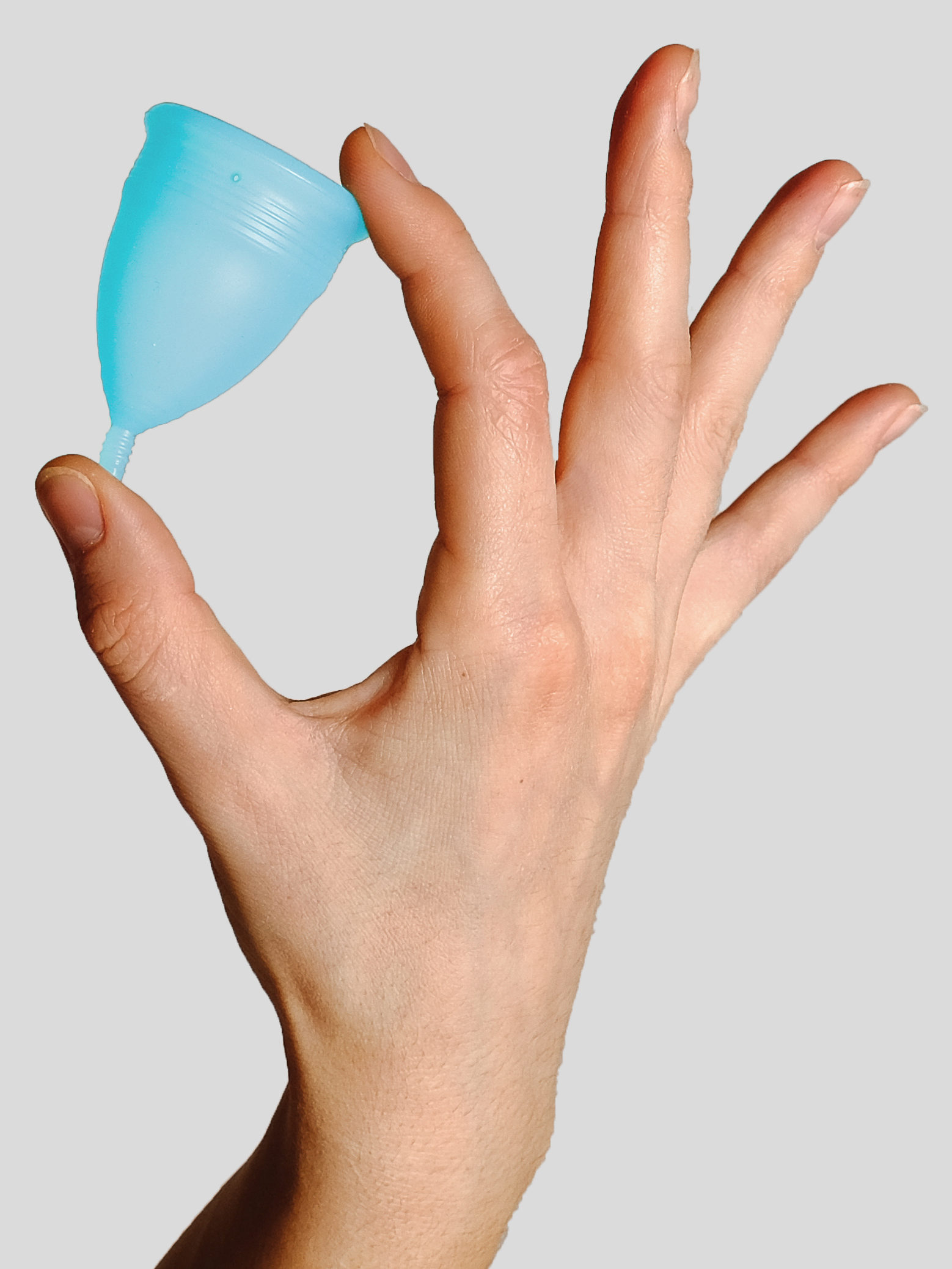
As you know, we’re solutions oriented here in The Hive! So let’s talk about what we can do about all this plastic trash! The best and most effective solutions aren’t some great tech invention. It’s you and me. Firstly, USE LESS. Say no to single use plastics. Find alternatives: a reusable water bottle; a reusable coffee cup (yes, there’s plastic in disposable coffee cups); a canvas tote bag; don’t use plastic produce bags at the grocery store; use metal straws or carry a folding silicon one; stop smoking; use reusable period products (yep – there’s plastic in disposable pads and tampons!); use loose leaf tea (you got it, there’s, plastic in most tea bags); switch to shampoo, conditioner, soap and moisturizer bars (or refill a bottle at a bulk grocery store again and again and again); use laundry soap nuts (or refill a bottle over and over); use beeswax wraps (or a vegan version) instead of cling film; switch to toothpaste tablets instead of a tube; use a bamboo toothbrush; stop chewing gum or chews your brand carefully (oh, you didn’t know…there’s plastic in nearly all of them!); get a reusable travel cutlery set for picnics (or literally grab some cutlery from your drawer and take with you?); ditch the disposable plastic razor and use a safety razor instead; and shop second hand clothing, so you’re not adding to the customer demand of synthetic/polyester (ie., plastic) clothing. For a more in depth look at some of these ideas, check out our video.
Secondly, you can help clean up what’s already there. Whether that’s at your local park, along a waterway or at the beach, this is super important to remove the risk of the trash ending up in the ocean.
Thirdly, you might have heard us say this once or twice…write letters! Petition to your local elected officials to introduce bans on single use plastics and restrictions on those things which aren’t technically considered single use, like food packaging and PET soda bottles.
We are choking our planet on plastic waste. So let’s all do more to reduce our plastic use and help preserve the wonder of this beautiful planet!


